
Natural selection, rather than sexual selection, plays a dominant role in the formation of body coloration in Drosophila suzukii
Abstract. Drosophila suzukii is a globally distributed pest, and its body colour exhibits notable plasticity. Given the important roles of natural and sexu
Ahh, Drosophila suzukii, a global pest...and best dressed? Whilst fashion week is over, these guys really put the fly in fruit fly! Known for their body colour plasticity, the role of sexual vs natural selection on their colour diversity was investigated...check it out 👇🧪🌍🦟
16.10.2025 09:30 — 👍 9 🔁 5 💬 1 📌 0
📣Call for Papers! Why are some individuals and taxa more resilient than others? Our latest Special Issue on Organismal Resilience aims to answers this question! Submit your research or register for our one-day symposium below 👇🌍🧪 academic.oup.com/biolinnean/p... @linneansociety.bsky.social
18.07.2025 15:09 — 👍 7 🔁 3 💬 0 📌 0

Ants, Acacias, and Breaking the Mould of Niche Conservatism
Discover the latest news from The Linnean Society of London.
New Blog Day! 🐜📣
The acacia fruit doesn't fall far from the evolutionary tree in this new blog, written by guest blogger Josie Cooper! Ever wondered how plants defend themselves from plant-eating predators? In the case of swollen-thorn acacias, the answer is ants...a 🧵 (1/6) 🌍🧪
buff.ly/Sm4NQsQ
14.10.2025 16:15 — 👍 10 🔁 6 💬 1 📌 0
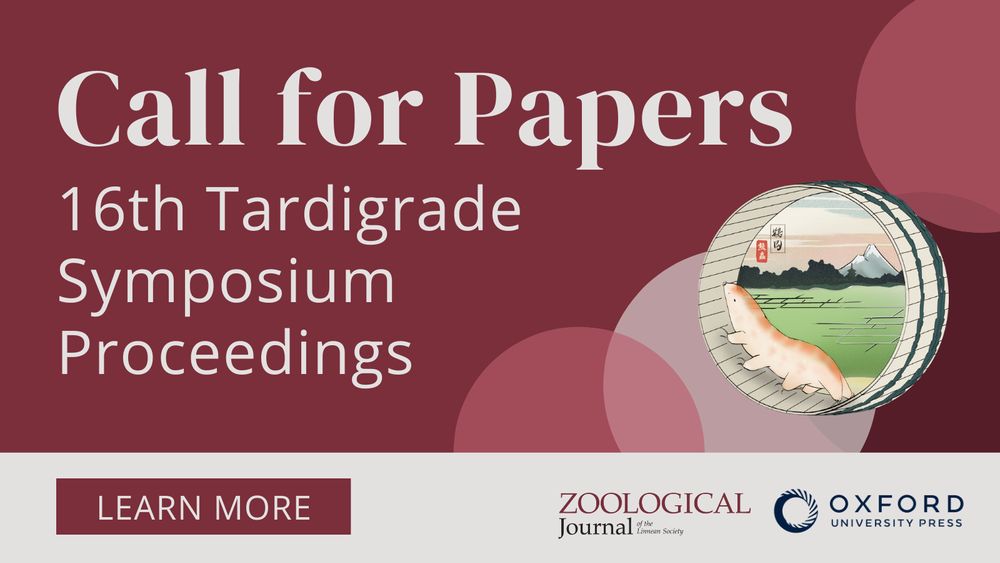
ZOOLIN is seeking submissions for their 16th Tardigrade Symposium Proceedings. On a burgundy design with an image of a tardigrade and varying circle sizes.
Remember the energy (and science!) at the 16th Tardigrade Symposium in Tsuruoka? If you presented your work, our community of researchers is building the official proceedings in the @zoojlinnsoc.bsky.social.
We'd love for you to be a part of it!
oxford.ly/3Io2fwq
23.09.2025 09:30 — 👍 1 🔁 1 💬 0 📌 0

Are you a PhD student ready to publish a paper? Submit your research to our journal today & enter one of our new journal prizes, celebrating PhD student work in #Biology! 🧪🌍👇
academic.oup.com/zoolinnean/p...
27.09.2025 09:30 — 👍 5 🔁 1 💬 0 📌 0


It's a match!
An ornithological mystery 180 years in the making has finally been solved, as the skin of the final (reliably known) female Great Auk has been recovered from the Natural History Museum of Cincinnati! 🌍🧪👇
doi.org/10.1093/zool...
#FossilFriday! #MAFSUK
26.09.2025 07:01 — 👍 14 🔁 7 💬 0 📌 1
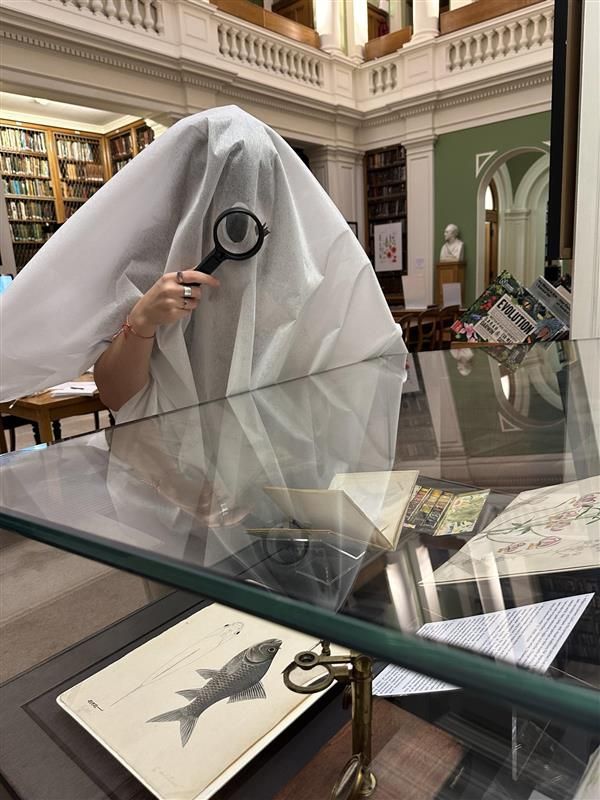
Who you gonna call? EVOLUTIONARY SCIENTISTS!
Ghost species (no, not species of ghost) are extinct, unknown & unsampled taxa...and they vastly outnumber those included in phylogenetics. This hidden diversity can complicate phylogenetic signals of horizontal gene flow, impacting their study...(1/2)🧪
19.09.2025 10:01 — 👍 17 🔁 5 💬 1 📌 1

As a Learned Society, our journals provide vital income that funds our charitable endeavours and community engagement. By reviewing for us, you give back to our community and contribute to our mission of creating a world where nature is understood, valued, and protected. (2/2)
17.09.2025 09:01 — 👍 0 🔁 0 💬 0 📌 0
It's #PeerReviewWeek and what better opportunity exists to say a huge thank you to our excellent reviewers from across the globe. It is your hard work & commitment that enables us to continue publishing ground-breaking research in Biology, Botany, Evolution and Zoology. (1/2)
17.09.2025 09:01 — 👍 1 🔁 0 💬 1 📌 0

How widespread is pollination by sexual deception of fungus gnats in Pterostylis (Orchidaceae)?
Abstract. Pollination by sexual deception has evolved multiple times in the Orchidaceae, with most known cases involving male Hymenoptera as pollinators. T
Did you know male wasps can get tricked by orchids into thinking they're females?
Pterostylis orchids use sexual deception as a pollination strategy, with fungus gnats (Diptera) falling victim, acting as the main pollinators of these deceptive plants! 🌍🧪👇
academic.oup.com/botlinnean/a...
16.09.2025 13:35 — 👍 17 🔁 10 💬 0 📌 2
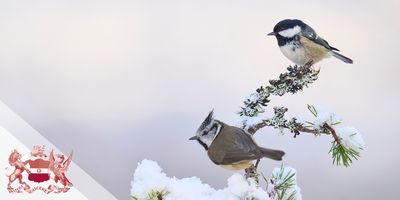
Hybrid Day Meeting | Organismal Resilience in a Rapidly Changing World
Join us at the Linnean Society for a one-day symposium focused on the mechanisms and consequences of variation in organismal resilience
Speaker Spotlight!
Today we're sharing molecular biologist Glenn Yannic, whose research focuses on the consequences of environmental & anthropogenic changes on the genetic diversity of alpine & arctic species.
Book to see Glenn Nov 20 🌍🧪👇
buff.ly/bLADJcs.?mso...
11.09.2025 09:12 — 👍 6 🔁 5 💬 0 📌 0

Hybrid Day Meeting | Organismal Resilience in a Rapidly Changing World
Join us at the Linnean Society for a one-day symposium focused on the mechanisms and consequences of variation in organismal resilience
Speaker Spotlight! 📣
Today we're highlighting Chloe Haberkorn, a biologist who specialises in evolutionary genomics, currently in yeast! Her PhD focused on resistance mechanisms in bed bugs (scream).
Come see Chloe on Nov 20 🧪🌍👇
buff.ly/bLADJcsmsock...
@chloehbk.bsky.social
09.09.2025 09:12 — 👍 8 🔁 6 💬 0 📌 0
Who's your daddy?? Our sister journal really knows how to ask the right questions for a Friday...check out the latest blog!
05.09.2025 17:02 — 👍 3 🔁 0 💬 0 📌 0

The first allokotosaurian from South America and the Gondwanan radiation of non-archosauriform archosauromorphs
Abstract. Allokotosaurians achieved a nearly cosmopolitan distribution during the Triassic Period, obtaining a high taxonomic diversity and a variety of fe
This #FossilFriday try your luck at our latest tongue-twister...non-archosauriform archosauromorphs (try saying that 3 times fast)! Based on a new specimen from Southern Brazil, this discovery increases the diversity of azendohsaurids throughout Gondwana! 🌍🧪👇
29.08.2025 09:01 — 👍 4 🔁 2 💬 0 📌 0


The rise of [the] beetles (Coleoptera) represents one of the most remarkable musical periods...I mean phenomena in the history of life: from membranous forewings to hardened elytra, they learned how to conquer wood-related niches, aiding in their success! But how and why? 🌍🧪👇
doi.org/10.1093/zool...
25.08.2025 10:02 — 👍 7 🔁 3 💬 1 📌 0

Body shape varies more between sexes than environments in Icelandic sticklebacks
Abstract. Body shape, a key trait in fishes, often varies among geographic regions and may reflect adaptation to variation in the local environment. In add
Males had a deeper body shape than females, yet differences were also found between environments, mostly between marine & freshwater populations! The degree of sexual dimorphism varied this way too, suggesting a complex interaction between natural & sexual selection 🌍🧪 (2/2)
doi.org/10.1093/zool...
22.08.2025 13:45 — 👍 6 🔁 0 💬 1 📌 0


Dyrosauridae are one of few large marine vertebrate clades to survive the K-Pg extinction, yet their early Cretaceous diversification is still poorly understood. Here, a new specimen from Angola is described & distinguished from known taxa, being placed in Hyposaurinae! 🌍🧪👇
doi.org/10.1093/zool...
21.08.2025 09:01 — 👍 3 🔁 0 💬 1 📌 0

Diversity and development of labial tooth row formulae in tadpoles
Abstract. Keratinized labial teeth of the oral apparatus are a conspicuous evolutionary novelty of anuran tadpoles. Although several comparative studies ha
Tadpoles have...TEETH?! An evolutionary novelty of anuran tadpoles, the taxonomic distribution of keratinized labial teeth remains a mystery. Yet here, variation in row number was studied in a phylogenetic context!
If you're bitten by a tadpole do you turn into a frog..? 🌍🧪👇
18.08.2025 14:31 — 👍 32 🔁 17 💬 0 📌 1

Getting Batty at Battersea
Learn how to use bat detectors to spot their squeaky echolocation calls with us, and how to identify different species.
SCREEAEAAEEEEEAAAAAAEAEAAA!!! That's bat for "Join our Bat Walks"! Every Wednesday at dusk in Battersea Park, book your place now (tickets are flying, just like bats...the only mammal to evolve true flight....) 🌍🧪🦇👇
15.08.2025 12:30 — 👍 12 🔁 3 💬 1 📌 0


YOU DIDN'T SEE ANYTHING (about this before now)...a new stem group of sphenisciforms (ancestral penguins) from Paleocene NZ, with 4 new genera & species has been described, showing previously unknown features of early penguins!
Smile and wave boys, smile and wave...🌍 🧪 🐧
doi.org/10.1093/zool...
17.08.2025 19:03 — 👍 9 🔁 2 💬 0 📌 0
Thanks to my co-authors & to curators, editors & colleagues who helped with this study! Thanks to @zoojlinnsoc.bsky.social for editorial & publishing work, & thanks to @erc.europa.eu that funded the #Gravibone project led by @houssayecnrs.bsky.social. Please feel free to ask if you have any request!
08.08.2025 09:06 — 👍 2 🔁 1 💬 0 📌 0

Hybrid Day Meeting | Organismal resilience in a rapidly changing world
Join us at the Linnean Society for a one-day symposium focused on the mechanisms and consequences of variation in organismal resilience
Speaker spotlight!
@trishschulte.bsky.social studies how fishes' physiology, biochemistry & genetics adapt to challenging environmental conditions, like high temperature.
Hear from her at our symposium on 20 November. Online & in person tickets available.
05.08.2025 16:00 — 👍 9 🔁 7 💬 0 📌 0
Minias et al ultimately propose whiskers serve multiple non-exclusive functions, with their cuteness just an added bonus! Want to know more? Read the full paper in our journal below (6/6) 👇🌍🧪
academic.oup.com/zoolinnean/a...
@linneansociety.bsky.social
04.08.2025 12:00 — 👍 7 🔁 0 💬 0 📌 0
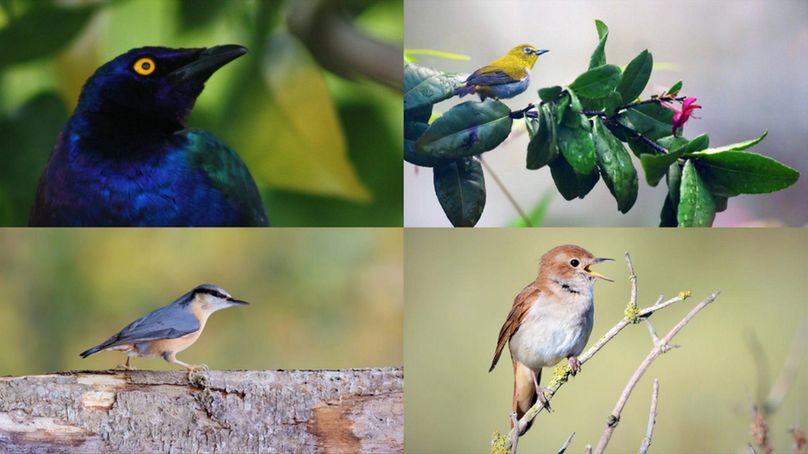
Four images showing the diversity of passerine birds. . Moving clockwise from left to right, Purple starling (Lamprotornis purpureus) which has a dark purple plumage and bright yellow eyes, Javan White-Eye (Zosterops flavus) a small yellow bird with flecks of blue feathers, Common nightingale (Luscinia megarhynchos) which is mostly brown aside from its grey chest feathers, European Nuthatch (Sitta europaea) a blue bird with a brown underbelly and a distinctive black stripe running from its beak to the back of its head.
As for their function? Strong evidence was found for longer & more numerous whiskers on invertivorous species & those foraging in the air, suggesting they assist prey capture. What's more, species living in dense habitats had longer whiskers, pointing to a role in sensory navigation! (5/6)
04.08.2025 12:00 — 👍 8 🔁 0 💬 1 📌 0
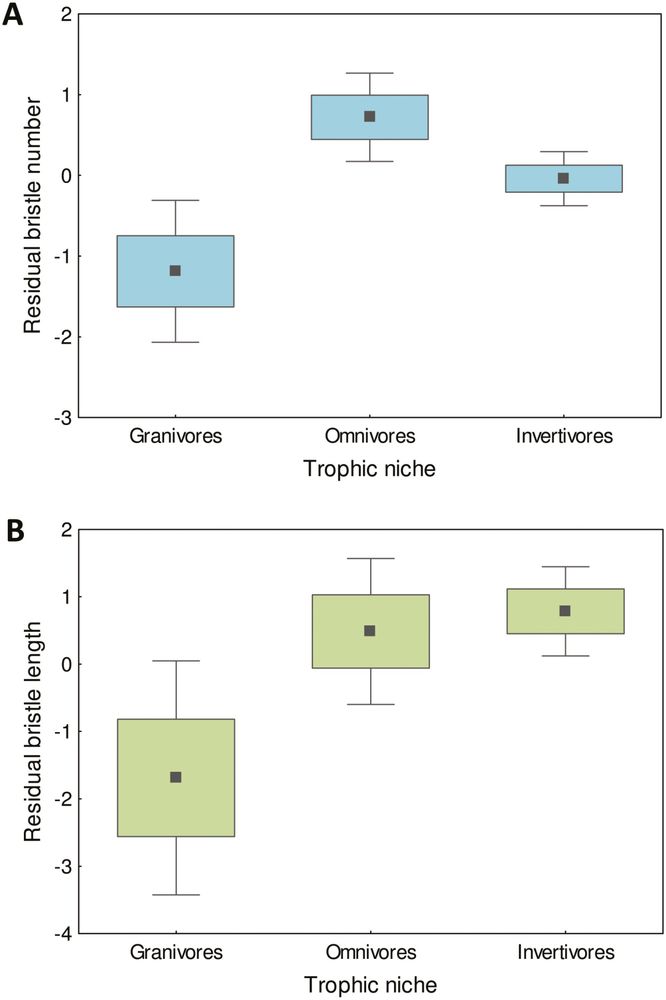
Two whisker plots showing the difference in number & length of bird whiskers across granivore, omnivore and invertivore species.
Interestingly, whilst there was significance in the number of whiskers at both genus & family level, this was only true at genus level for the length of whiskers, suggesting they have evolved only recently & independently among families! (4/6)
04.08.2025 12:00 — 👍 5 🔁 0 💬 1 📌 1
Testing for evolutionary links between length & number of whiskers with passerine ecology, life history, biogeography & morphology, Minias et al ringed over 1300 birds between 2020-2023. Their aim? To reveal the evolutionary predictors of whisker traits at a genus & family level! (3/6)
04.08.2025 12:00 — 👍 5 🔁 0 💬 1 📌 0

A nightingale sits upon a small branch with its mouth open, likely singing.
Using phylogenetics, Prof Piotr Minias and co took it upon themselves to investigate their functional evolution in Old World passerines, the largest order of birds with high phylogenetic diversity. But what were they looking for? (2/6)
04.08.2025 12:00 — 👍 6 🔁 0 💬 1 📌 0
Bronto-queen, big cat, best-selling and award-winning author of The Last Days of the Dinosaurs, When the Earth Was Green, and Tyrant Lizard Queen (2026). 🔞 she/they/it. Skreeonk. http://rileyblack.net
Create and share social media content anywhere, consistently.
Built with 💙 by a global, remote team.
⬇️ Learn more about Buffer & Bluesky
https://buffer.com/bluesky
Queer history. Queer science. Queer history of science! Writing a book (📚 agent: @phi11y.bsky.social). Trekkie 🖖. #Strictly fan 💃. Seaside living ⛵🍦. He/him.
The official account for Oxford Academic, featuring Oxford University Press's academic news and insights.
A strategic & interdisciplinary initiative at the Swiss Federal Research Institute WSL. We aim to promote, further develop, and consolidate research and outreach in biodiversity science at WSL.
Birmensdorf - Switzerland
https://biodiversitycenter.wsl.ch/en
Tropical ecologist | restoration | vegetation science | biodiversity monitoring | forests & grasslands | Amazonia & Andean mountains #BMAP #Smithsonian #DRYFLOR. ENG/SPA posts are mine
https://nationalzoo.si.edu/about/staff/reynaldo-linares-palomino
20 years ! of sharing open wildlife sounds from around the world. Birds, Grasshoppers, Frogs, Bats, Land Mammals. 11k recordists, 12.75k species, 950k recordings. Open data is not free! Consider a donation https://xeno-canto.org/donate :-)
The UK's leading marine charity working towards a cleaner, better protected and healthier ocean for everyone 🌊
Colecciones científicas y pedagógicas expuestas en una escalera barroca en el centro de Madrid https://sites.google.com/view/iessanisidropatrimonio/inicio
A nudibranch and sea slug fan account, run by @saimihanma.bsky.social
#Nudivember
ウミウシ
Mostly repost nudis that have alt text
https://www.metrofieldguide.com/nas/
Annual plant knowledge quiz among UK and Irish Universities. For more information https://botanicaluniversitychallenge.co.uk/
For a just world that values and conserves nature.
www.aciucn.org.au
Supporting, enhancing & mobilising expertise in marine species conservation for a better future.
[Reposts are not endorsements]
http://iucn-sscmarine.org
🦁 Nature in the city
🌎 Restoring wildlife in over 80 countries
💪 A ZSL conservation Zoo
This account is not currently monitored.
Official account of UN Environment Programme World Conservation Monitoring Centre
Bat squeaks by Joe and Andreia with occasional special guests! Posts are not endorsements. 🦇
www.linktr.ee/BatConservationTrust
When birds thrive, nature thrives, and so do we.
We take the pulse of the planet through birds; protecting their habitats & global biodiversity.
BirdLife is the largest nature conservation partnership in the world.
We are the only global Partnership conserving birds and all life on our planet.🦜 123 Partners in 119 Countries.📍🌍 Follow us to join the flock!
The need for independent journalism has never been greater. Become a Guardian supporter https://support.theguardian.com
🇺🇸 Guardian US https://bsky.app/profile/us.theguardian.com
🇦🇺 Guardian Australia https://bsky.app/profile/australia.theguardian.com
We're the charity that looks after London's eight Royal Parks. For serious incidents and emergencies please contact the police.

























